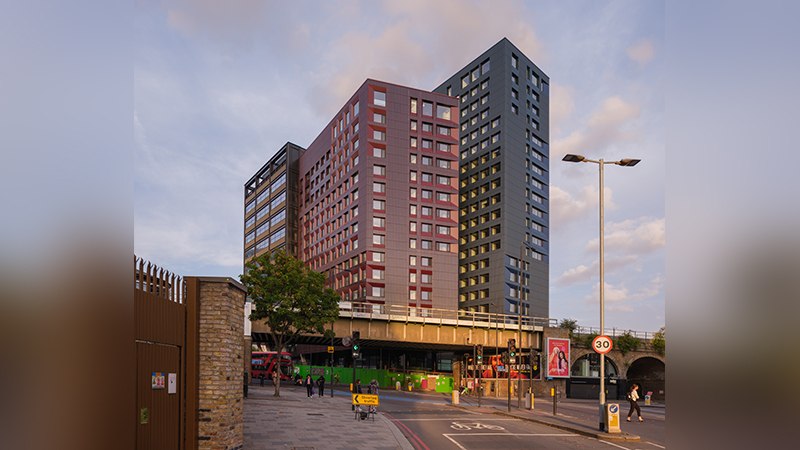Ed Harris, Sian Owles, Nicholas Holman, Adam Brown and Elliot Weston explore what GP-led transactions are, the common motivations for their execution, why the real estate funds market may be looking at more GP-led opportunities and what the challenges of executing them may be in the real estate funds industry.
The private equity market is currently digesting a wave of “GP-led” transactions coming to market, many of which are single-asset deals.
The economic uncertainty and unpredictability in the market caused by the coronavirus pandemic has not slowed down the private equity industry’s enthusiastic adoption of general partner (GP) led transactions – a technique that not so long ago was primarily used to restructure underperforming funds. In 2019, GP-led transactions accounted for approximately 30% of total secondary fund market volume and involved some of the most successful and well-known private equity funds. What has been surprising, however, is how few of these GP-leds have been in real estate funds. The market sentiment is that the real estate funds market has not fully embraced GP-leds in the same way as the private equity, credit and infrastructure markets, but that may be poised to change.
What is a GP-led?
This is a transaction whereby a sponsor of an existing investment fund (“existing fund”) sells all or a portion of the existing fund’s portfolio of assets (directly or indirectly) to a newly established fund managed by the same sponsor (“continuation fund”). The transaction will be “led” by the same sponsor, though underwritten by one or more new investors, who will provide the cash for the continuation fund to acquire the assets of the portfolio that are subject to the sale. Limited partners in the existing fund will be given the option to cash out and/or roll over their investment in the existing fund into the continuation fund.
The terms have evolved over time and vary from deal to deal, but often the terms of the rollover enable the existing investors to invest in the continuation fund (and thereby retain their exposure to the underlying assets) on the same terms (or at least the same economic terms, such as management fees and incentive equity arrangements, carried interest) as their investment in the existing fund.
However, the terms of the rollover may require the existing investors to commit additional capital, in the same proportions as additional capital provided by the new investors to the continuation fund, or be subject to dilution in the event that they elect not to commit new capital.
The provision of the additional capital to the continuation fund by the new investors and rollover investors may be one of the key motivations for a GP-led (see below). The sponsor will typically roll over some or all of its invested capital and some or all of any incentive equity (carried interest) that is crystallised by the transaction (the exact proportion of the rollover being one of the key negotiating points of the transaction).
Common motivations
There are different reasons that a fund sponsor may explore a GP-led transaction through the creation of a continuation fund.
Initially, GP-leds were associated with underperforming funds; a GP-led transaction solved for the management fee having expired, the carried interest being underwater and investors, above all else, wanting liquidity. Now, however, a GP-led solution can be used for various other purposes, including to solve for an outperforming fund, or an outperforming asset in a fund.
In some cases, the sponsor may find that an outperforming portfolio or asset is ripe for exit but also presents tremendous growth potential in the future, and so may want to give its investors the opportunity to decide for themselves whether to cash out, stay invested or elect a combination of both.
In other cases, a sponsor may see growth opportunities in a portfolio or asset that will outlive the life of the existing fund (even after a few fund extensions) – for example, a third-party sale of the asset or portfolio or an initial public offering for a particular asset in a portfolio may in either case need a longer hold period to maximise value than the existing fund’s terms allow. In this case, a continuation fund could be established and marketed to hold these assets for the longer hold period, thus attracting investors seeking longer-term capital appreciation, while at the same time enabling the sponsor to satisfy the liquidity requirements of the existing fund.
In cases where a portfolio or asset requires additional capital for the sponsor to fully realise its investment thesis, but the existing fund has insufficient dry powder to do so, a continuation fund offers the unique opportunity to simultaneously raise additional capital and provide liquidity for those investors that desire it.
In this economic environment, where traditional exit processes such as an auction sale or IPO may be harder to execute, or where operating businesses are struggling and may need time to recover, sponsors have found a GP-led transaction to offer a credible alternative exit solution that in many cases is easier to navigate than a traditional adversarial transaction process.
Why now, real estate funds?
Looked at as a whole, and very much unlike the private equity funds world, the real estate funds market is a very broad church, covering everything from balanced funds focused on unleveraged “core” assets with “trophy” high-credit tenants through to, at the other end of the spectrum, leveraged funds pursuing opportunistic strategies. Many “value-add” managers have generated strong returns for investors in recent years by acquiring assets with some less attractive features and repositioning them so they become attractive (and can be sold) to managers of funds with a lower-risk core/core-plus strategy.
As a consequence of the pandemic, de‑risked, diversified portfolios of income-producing assets should be increasingly sought after. Investors who already own them via a value-add fund may be more reluctant to see them sold to a core/core-plus buyer.
One key related development we have seen in the past few years is secondaries funds increasingly investing significant capital to acquire lower-risk, income-focused infrastructure assets that were owned by a fund that originally took construction risk, with the secondaries funds taking out their own debt facilities to help them meet their own return requirements.
In theory, this approach should also work in the real estate sector, allowing value-add fund investors who wish to take their profits and exit to do so, with their capital being replaced by secondaries buyers who will then sit alongside those investors who prefer to stay invested in the (now repositioned) portfolio.
Accordingly, the common motivations for GP-leds described above (the need for longer hold periods, the need for additional capital to execute a manager’s investment thesis and the competing demands of existing investors to obtain long-term growth and near-term liquidity) are starting to present themselves in the real estate market. Real estate fund managers may therefore seek to establish a continuation fund structure to create a bespoke solution for issues presented in the current economic climate.
What are the challenges?
Some of the challenges for GP-leds in real estate funds are not unique to real estate. The manager has to manage conflicts as it is on both sides of the transaction. The terms of the fund will dictate what approvals may be required to implement the transaction (such as investor approval). Additionally, managing disclosure and addressing concerns of information asymmetry between existing investors and new investors to ensure that all parties have equal access to information when making investment decisions can be difficult.
However, these are all challenges that have been encountered in the private equity industry, and market familiarity with these structures has enabled market standards to develop over time. Additionally, the Institutional Limited Partners Association, a trade association for institutional private equity investors, has issued guidance in respect of private equity GP-leds, and many of their recommendations can be similarly applied in the real estate funds market.
Above all, communication is a critical part of the execution of a GP-led, in particular whether the motivation of the GP-led is understood and appreciated by the existing investors. If existing investors do not see the rationale for the proposed transaction, they may not approve it.
Other challenges for executing GP-leds in real estate funds are that sales of interests in real estate funds can have tax implications for both buyers and sellers. Sellers may find that capital gains tax liabilities arise in the jurisdictions in which the real estate assets are located where an indirect interest in entities that derive their value from real estate is being sold. Buyers may find that real estate transfer taxes apply or that withholding tax obligations can arise in respect of the seller’s capital gains.
All in all, real estate fund GP-leds require careful structuring, due diligence and communication to manage the conflicts, the messaging to existing investors and any approval process, and to mitigate the risks of tax leakage.
Ed Harris, Sian Owles, Nicholas Holman, Adam Brown and Elliot Weston are partners at Hogan Lovells











